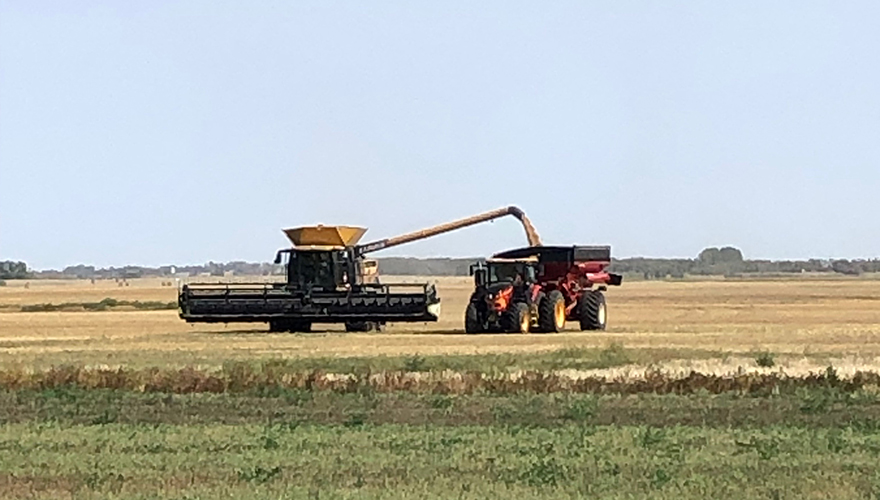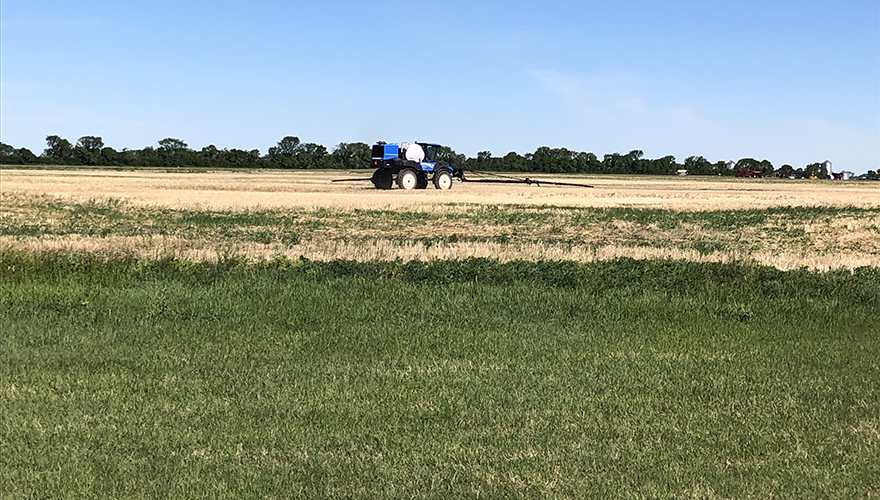Posted September 24, 2024
AERATION AND NATURAL AIR-DRYING EQUIPMENT MANAGES MOISTURE CONTENT
Brought to you by Nutrien Ag Solutions and Meridian
In the past, many producers considered grain aeration equipment as a last resort, in the event they were caught at the end of harvest with wet grain. Aeration would keep the grain from spoiling until it could be run through a grain dryer. These days, aeration or natural air-drying equipment is another tool in the harvest toolbox – allowing growers to focus on harvest while allowing grain to come off with higher moisture content.
AERATION SYSTEMS
Aeration systems, which can be installed new or retrofit into older bins, move air through stored grain. This process reduces the rate of grain deterioration and reduces storage risks. By cooling and conditioning hot dry grain, aeration systems prevent overheating, mold growth and bug infestations.
The ambient cold air is very useful in the control and prevention of infestations. According to the Canadian Grain Commission, once the grain temperature is less than 18 degrees Celsius, insects are no longer feeding and reproducing within stored product. Continuing to reduce the temperature will ultimately cause the bugs to die.
NATURAL AIR-DRYING SYSTEMS
An alternative to continuous fan operation, natural air drying systems are sometimes considered a more cost-conscious alternative to aeration systems. Unheated air is forced upward through the grain, evaporating and carrying away the water, which dries the grain down by 4-6 points of moisture. This allows harvest to start 7-10 days earlier in warmer and drier weather, protecting the grain quality for better weights and grades. Keeping grain from getting too dry in the field and retaining the most moisture possible leads to more weight and in many cases, higher returns.
Types of natural air-drying equipment
Hopper bins
- Horizontal perforated tubes
- Vertical perforated air tubes
- Roof vents recommended
Flat floor bins
- Full floor aeration
- Square pit
- Roof vents recommended
Aeration fans size and airflow requirements
- Air Flow Required: 0.1 – 0.2 CFM / Bu.
Natural air-drying fans and airflow requirements
- Air Flow Required: 3/4 – 1 CFM / Bu.
- Approximate fan size: 1 HP per 1,000 bushels of grain
Note: Fan size requirements will vary from bin to bin, depending on what type of grain is being stored and how tall the bin is. Bin height affects how strong the static pressure will be and the amount of airflow the fan is capable of putting out. Not enough airflow could mean poor success at natural air drying.
MANAGING DRYING TIMES
In order to ensure that the pressure inside the bin builds correctly, there needs to be as much grain depth above the air-drying system as there is from the centre of the bin to the bin wall. In short, this means the bin should be filled up to the inside eaves and not overfilled before turning on the fan. This will let the air move evenly through the pile.
When the temperature drops below 10 degrees Celsius, air drying won’t happen. Adding a supplemental, low temperature heat can help to warm the air and reduce humidity, improving drying. Increasing temperatures by 10-12 degrees can reduce the humidity in the air by as much as 40 per cent.
To be sure of complete cooling or warming cycles in stored grain, changes in temperature have to be monitored. The temperature should be within 15 degrees of the average outside air temps. If not, the aeration system should be started immediately.
MONITORING & MAINTAINING
Grain monitoring systems offer huge advantages with investments for many systems as low as a few pennies per bushel. Installing a grain monitoring system along with aeration helps maximize the energy efficiency of fans, provides accurate information for long term storage, sends out alerts to quickly changing grain conditions, all of which helps keep grain in the highest quality condition while detecting potential mold growth and insect activity.
Temperature and moisture cables can be customized to individual needs and provide peace of mind in knowing that remote wireless systems are monitoring moisture content, humidity and inventory levels and will send text notifications in the event of drastic changes.
FEATURED LINKS
NEWSLETTER
Want to stay caught up in all things agriculture? Sign up for the newsletter and get all the latest news straight to your inbox.
Posted October 11, 2017





